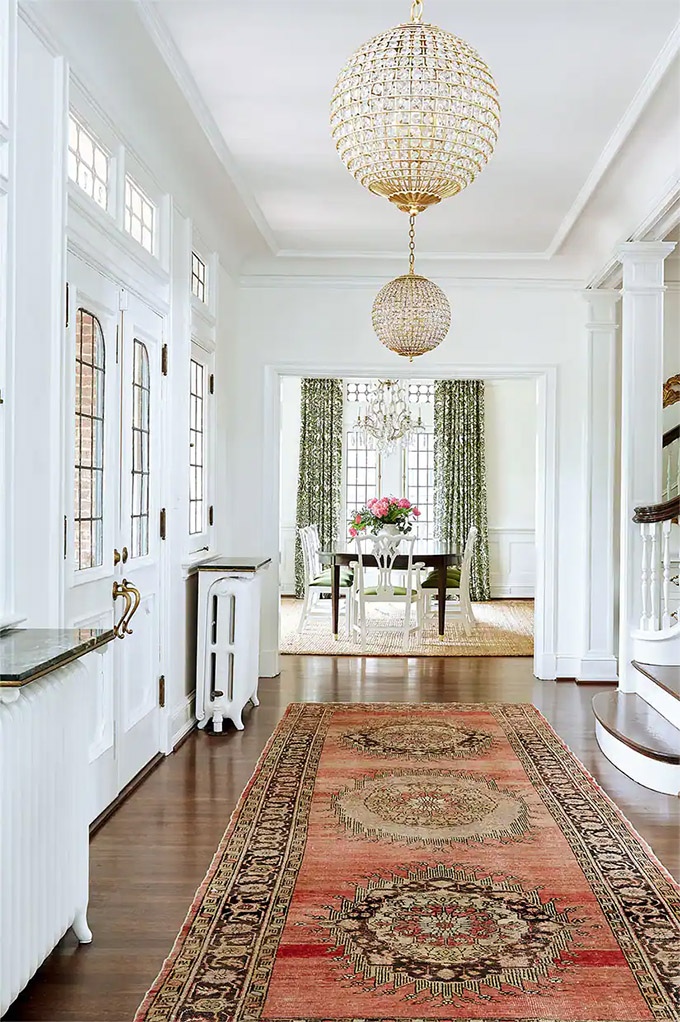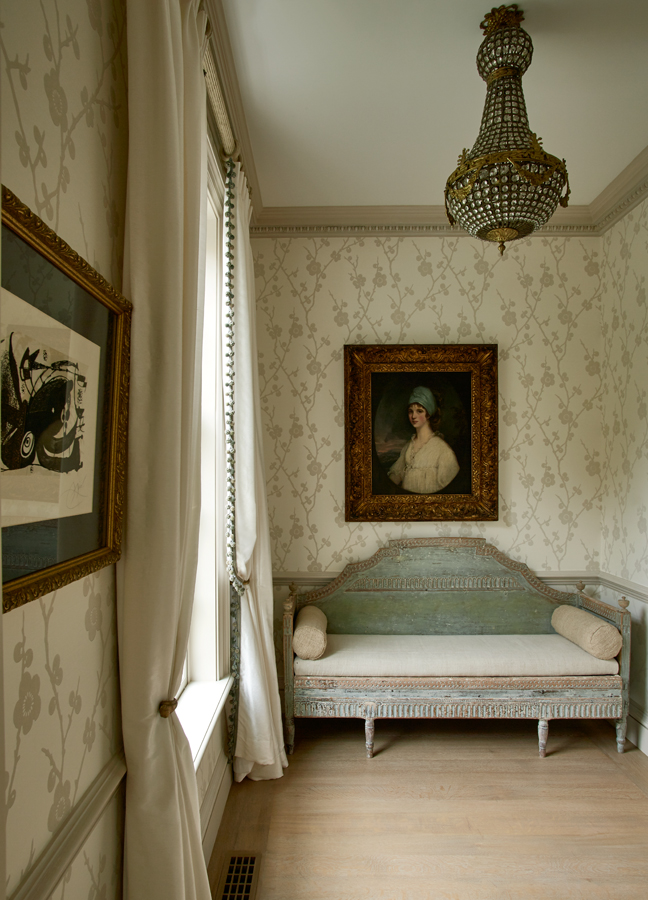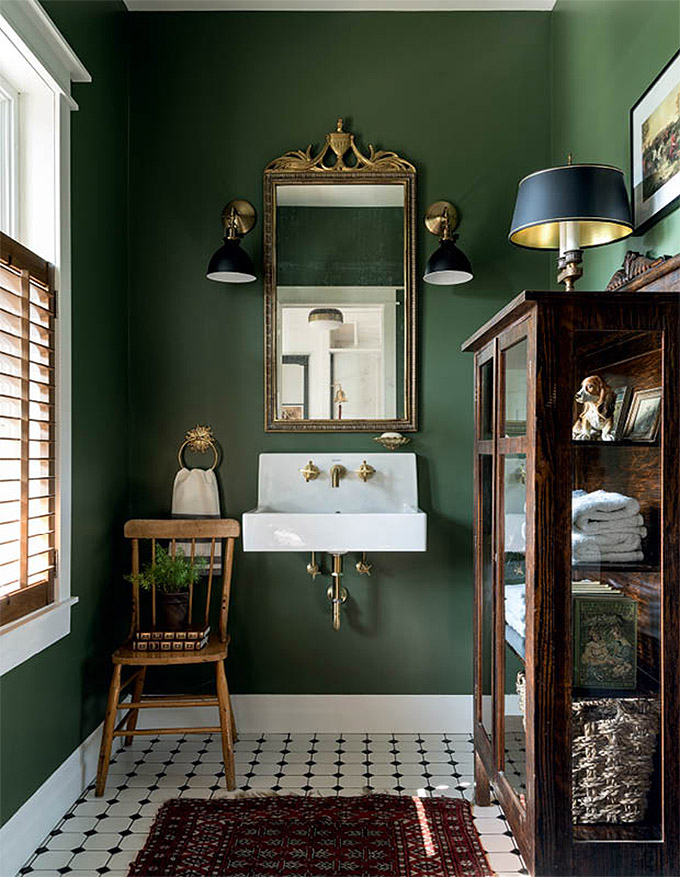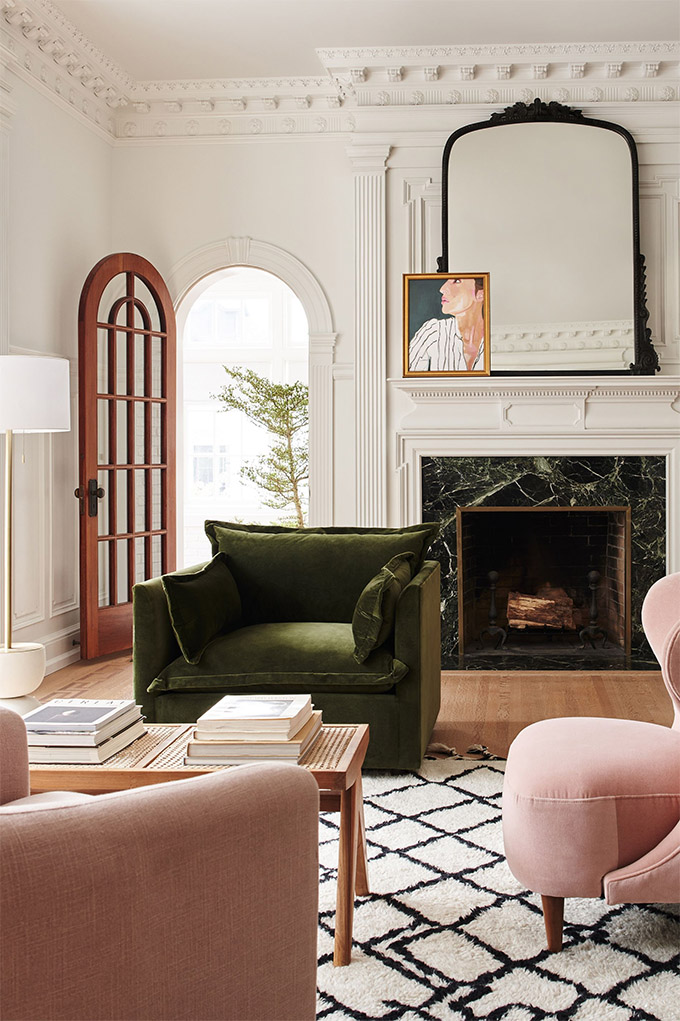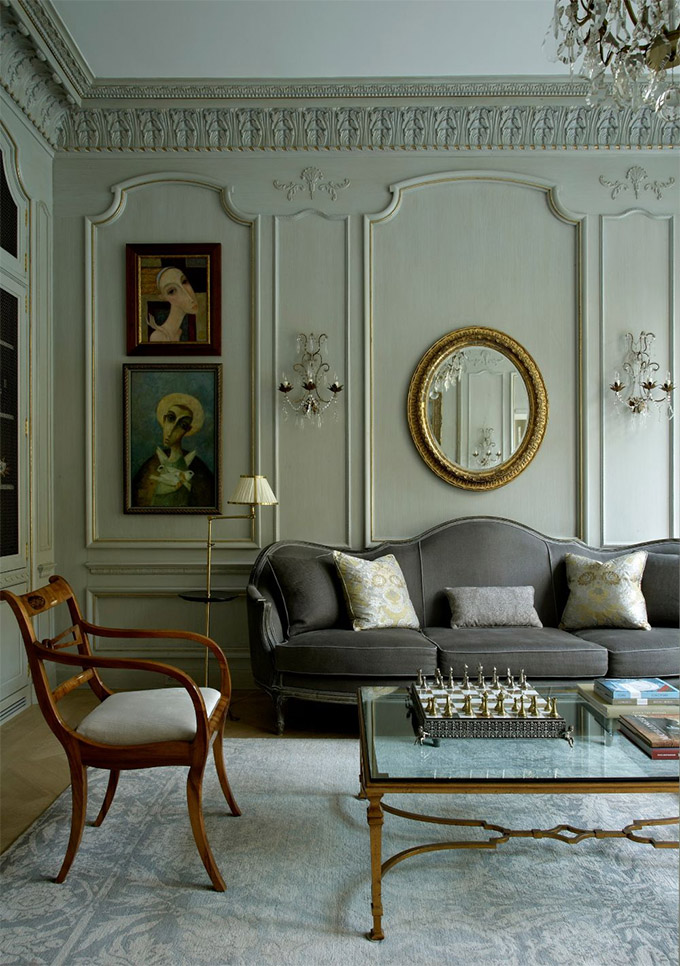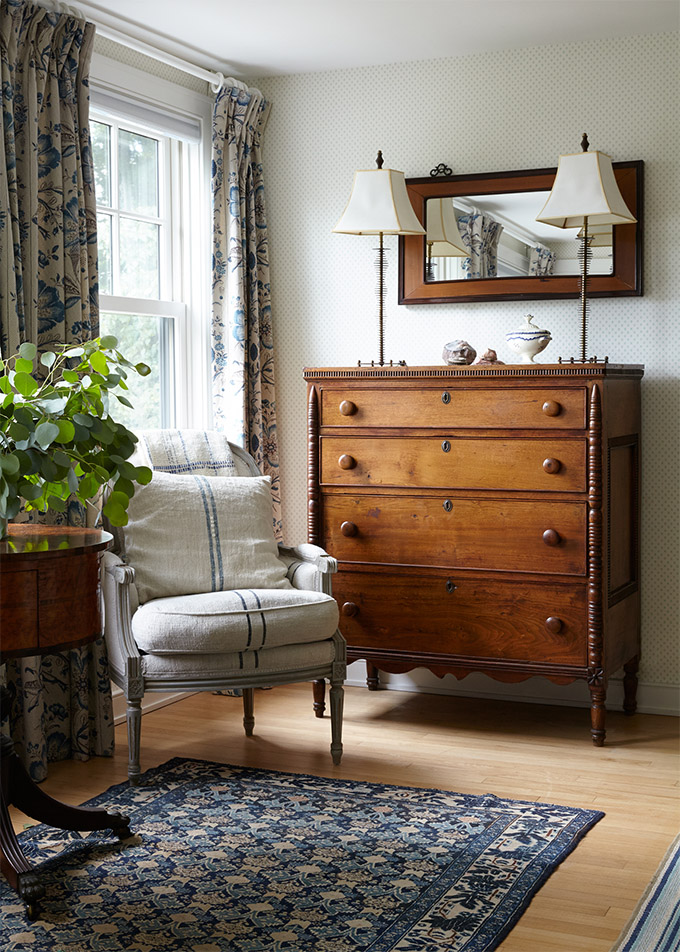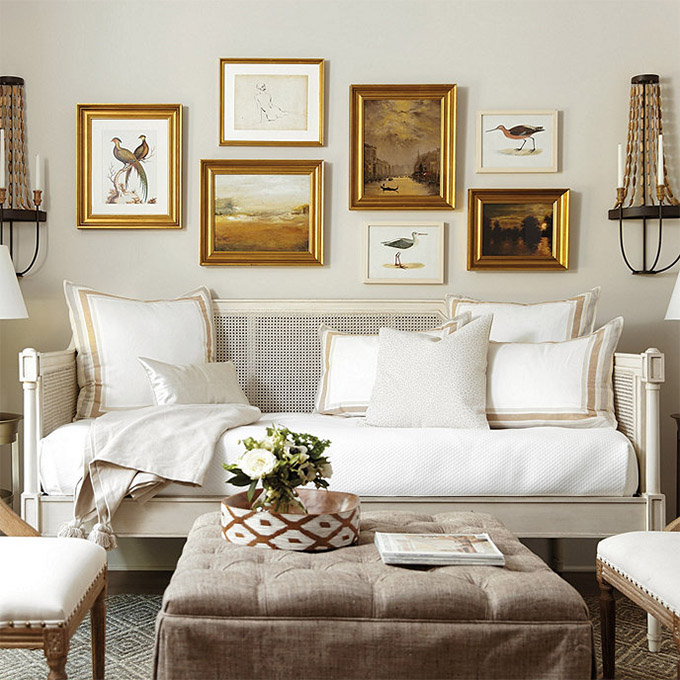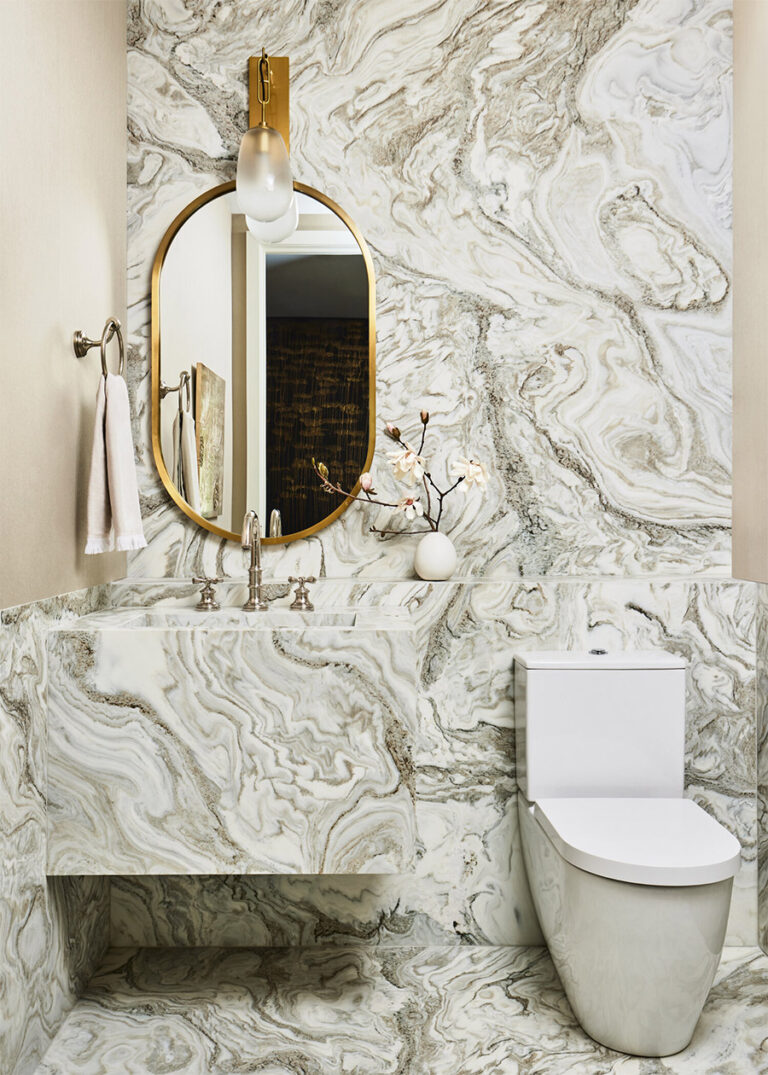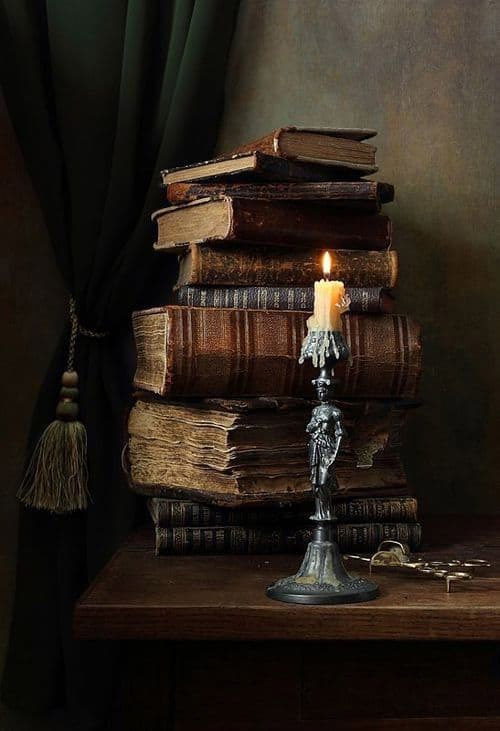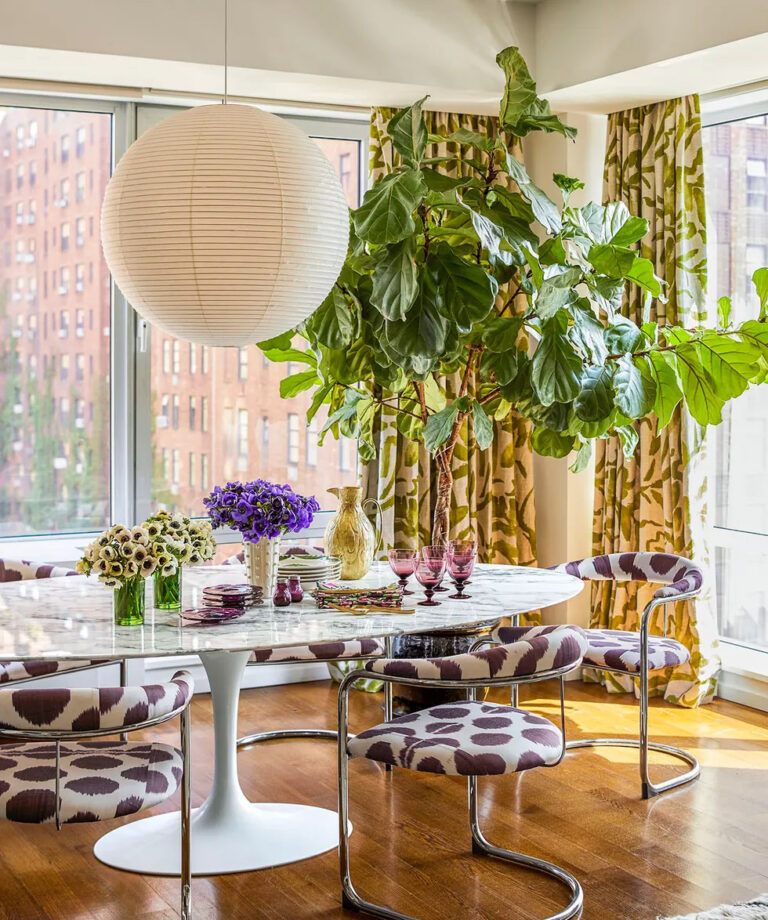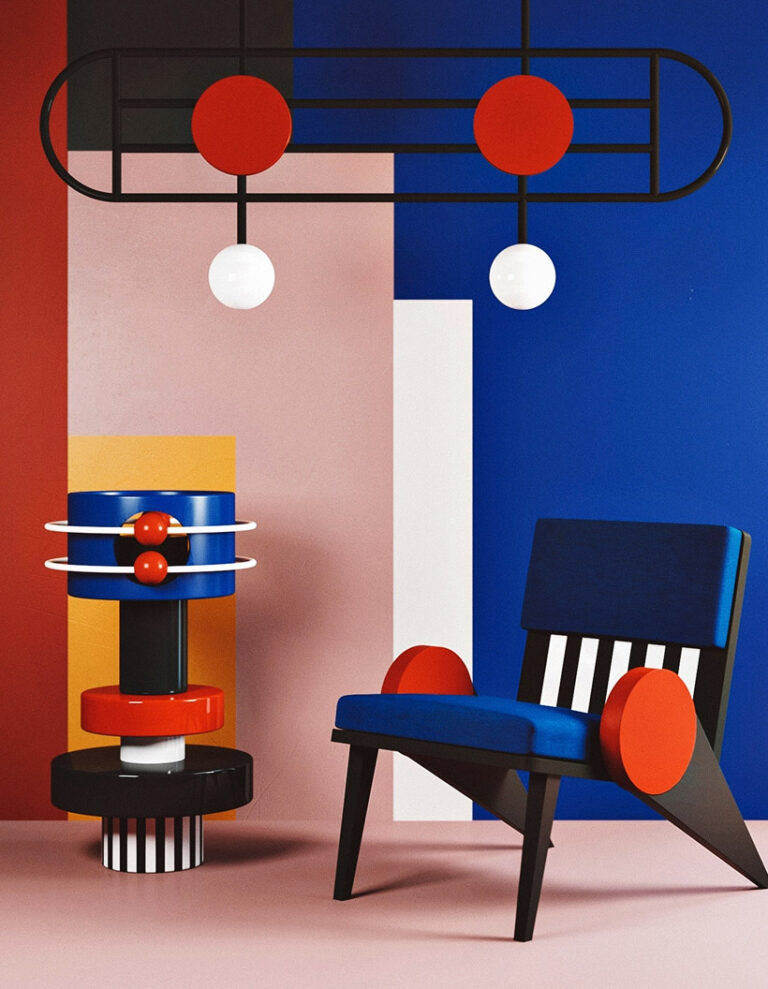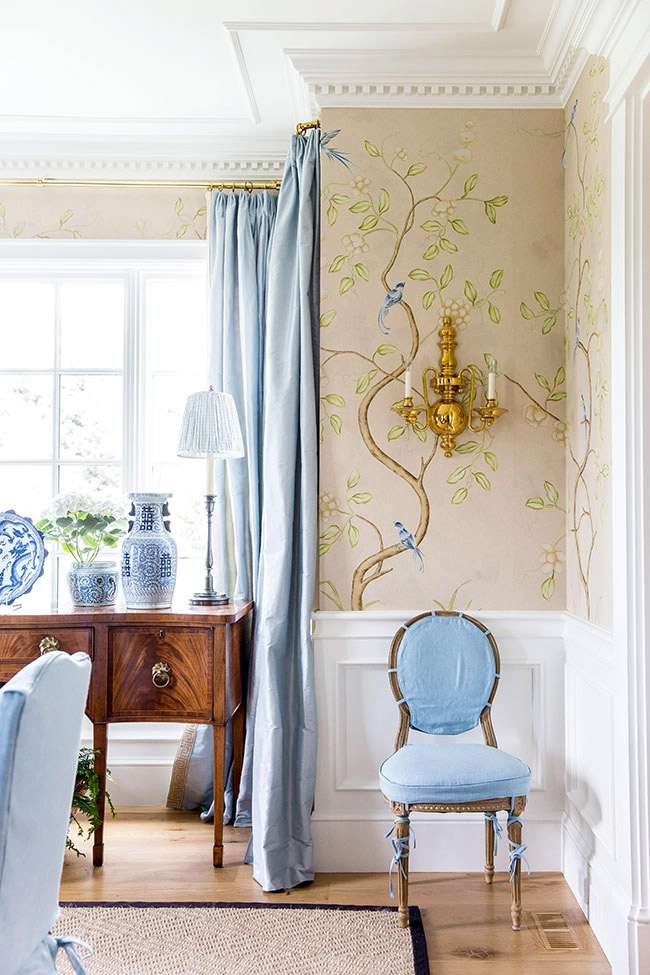How To Decorate Traditional (But Not Stuffy!)
This post may contain affiliate links. If you make a purchase through one of my links, I may make a small profit at no expense to you. For further information, please view my policies.
Charm without the Stuffiness: Tips for Traditional Home Decor
If you are passionate about interiors, then you will know that trends come and go! But there are certain styles that stand the test of time… and the traditional interior design style is definitely one of those timeless design styles.
If you love this interior look and want to learn more about it, specifically how to style your home this way, then keep reading for a detailed breakdown of this iconic design look.
What is Traditional Design?
Traditional design is inspired by 18th and 19th century home interiors and style. Taking architecture, furniture, and other design elements from Europe, particularly France and England, it is a historic style that is classic and timeless.
Why is it called “traditional”? Well… it’s inspired by design elements that are viewed as well-established, that have been used in interiors for a long time, generation after generation. We will examine those elements in this post! Just like how for example you might have a tradition in your family to put up a tree at Christmas, tradition is something that brings comfort and familiarity!
Today’s traditional style essentially pulls elements from a large group of different style movements in Europe, namely:
FROM BRITAIN:
Queen Anne (1702–1760)
Georgian (1714–1830)
Rococo (1730–1770)
Neo-Classical (1750–1830)
Regency (1762–1830)
FROM FRANCE:
Regence Style (1700-1730)
Louis XV (1730-1760)
Louis XVI (1760-1789)
Empire Style (1804-1815)
Restoration (1815-1830)
We definitely want to stay away from adding a lot of elements that are TOO ornate. Be very careful with introducing pieces that are too baroque or rococo, as it can get tacky reaaaaal fast.
What are the Elements of Traditional Design?
Traditional isn’t what you’d call a laid back style, but don’t worry! We’re going to break it all down and make sure our traditional decor stays classic and timeless, but more importantly, chic and in line with the 21st century.
There are many elements and design features that reflect a space with traditional design. Let’s break down the basics!
Architectural interest
If you don’t have architectural interest in your home, is it even traditional? 🤣 Nope!
In traditional interiors, millwork and elements such as crown mouldings, baseboard trim, picture frame moulding, built-ins, carved fireplace mantels, ceiling medallions, wooden stair railings and wood paneling like board and batten or shiplap are *essential*.
Perhaps not ALL of the above ALL at the same time, lol, but at least some of the elements mentioned above are needed in order to infuse that traditional vibe.
If you are craving the traditional look in your home, and you don’t have any millwork, that would be the very first thing I would suggest adding.
I am of the school of thought that your millwork should technically match the style of your home. And you also want to make sure that it’s proportionate to the size and height of your rooms.
Color
The colors used in original traditional design would vary based on social status: rich and lavish colors would be used to show off wealth, as exotic pigments were only available to those with the means to buy them. And poorer people resorted to more common pigments (in their paints and fabrics) are they were more readily available and therefore cost less.
Today’s traditional design take is neutral, muted and toned down.
Monochromatic color schemes are a classic way to connect to this design style, and using a neutral color palette helps to soften traditional elements that can often overpower the design and make the space feel a bit too stuffy.
If you’re using a lot of wood furniture in your space with traditional silhouettes, this can become visually quite heavy. So consider introducing lots of soft and light crèmes, warm mushroom grays, and lots of white to keep it fresh, brighten the look and bring it into the new era.
Materials
Hardwoods like oak, cherry, hickory, walnut and maple are common and popular in traditional design. This is because these wood species were accessible to Europeans and Americans back in the 1700s and 1800s. You can find these woods used in plank hardwood flooring, furniture like tables and sideboards. Pine (a softwood) was also used for furniture.
White marble was a popular stone choice and can be seen in fireplace mantles, busts, and statues. Marble and porcelain table tops were sometimes used and marble inlay was common in furniture as well, particularly in the rococo and neo-classical periods.
Gold (brass) is still very much on trend in interior design today, but I recommend using it only on your tapwear, hardware, lighting or on accent pieces like picture frames. Steer clear from chunky gold pieces of ornate furniture as they will probably just end up looking tacky. We need to remember that we don’t live in Versailles and that over the top look only looks good there. One very ornate gold frame is ok, but don’t overdo it!
Alisa from A Glass of Bovino does this so beautifully in her office – note the combination of traditional and more contemporary elements in the vignette pictured below! Stunning!
However if your home looks like the picture below, it’s beautiful, but unless you live in a french château, you’ve gone too far:
And please try to refrain from painting your mouldings gold.
I’ve seen people DIY’ing this in their McMansions and it’s honestly not a good look. Again: in 500 year old french chateau, yes it works. In a 2021 Ohio new build, mmmh, maybe not so much.
Patterns
While many design styles may focus on solids or a select pattern or two, traditional design is notoriously known for engaging many different patterns and prints as part of its design style. Traditional design usually blends and matches different patterns of origin and textures, relying on rich colors and fabrics to create a stunning and intricate look and feel. Furthermore, these traditional designs often include classic and timeless elements that exude elegance and sophistication. This design style can bring character and personality to any space, making it perfect for anyone looking to captivate attention while maintaining a balanced aesthetic.
Some examples of classic traditional patterns would be plaids, stripes, gingham, damask, toile, and beautiful floral motifs such as the ones designed by William Morris.
Related: Learn How to Mix Patterns Like a Pro!
Wallpaper
Another huge element of traditional design is wallpaper.
From dramatic damask wallpapers to detailed florals, wallpaper is something to use in select spaces in your home, such as a powder room or dining room. The wallpapers can feature any of the patterns mentioned above.
Grasscloth wallpaper can also be an excellent choice for a traditional style interior.
I recommend not doing single wallpapered accent walls (aka “accent walls”) – they’re mostly just awkward and make a room look unfinished, as if you ran out of wallpaper!
If you are going to wallpaper, do the whole room as it will be much more impactful!
Furniture
One of the biggest giveaways to traditional design is the furniture. There are so many classic and iconic traditional furniture pieces, such as the wingback chair or Windsor chair. This is also because traditional pulls from so many design movements, as we saw above!
Unless it’s a sofa, the furniture will always be primarily made out of wood, but a key detail to spotting traditional style furniture is through the legs and feet.
Look for rolled arm sofas, curved or turned legs on chairs and tables, claw and ball foot or a bun foot for hutches and bookcases, and even a spadefoot for desks and console tables. These are classic elements that stem from the roots of traditional design back in the 1700 and 1800s, and bring added character and charm to your room’s look and feel.
Decor
From crystal chandeliers and framed landscape art in ornate gold frames, to blue and white porcelain vases and Persian rugs, traditional decor brings in touches of luxury through curated objects that are put on display.
Many styles keep the decor to a minimum, but often traditional design is full of objects and decorative items. Perhaps a show of one’s wealth and good taste? Who knows!
However, in order to keep things in the 21st century and not looking like grandma’s prized treasure collection (as much as we LOVE it!!), you need to pare things down and simplify the decor.
I still encourage you to play around with vintage and the odd ornate piece, like gilded mirrors, decorative busts, and grand wall art, but if you want to make this style feel less stuffy, then try to reduce some of the … well … stuff. 🙂
A select vase displayed on a pedestal, or a single piece of wall art keeps true to the style without going overboard.
Finally, if you’re decorating traditional style, absolutely do not overlook adding curtains!
Related: How to Hang Curtains Like an Interior Designer
How to make Traditional Design More Modern?
Traditional design has a reputation of being a bit stuffy and can be associated with old, outdated, and formal.
To lessen that formal and frilly feel, usually the solution is simply to mix in more modern (contemporary) elements.
For example in the image above from Anthropologie with the green chair, we have an extremely traditional room, with a lot of architectural interest and detailing. If we were to add traditional furniture into this already very ornate room, things would start to feel overpowering, and probably a little dated. The space is kept fresh and modern by utilizing more contemporary furniture. The only ornate piece of decor is the mirror above the mantel. This creates an excellent balance in the room between traditional and modern (contemporary).
RELATED: Best Affordable Lookalike of the Velvet Article Sven Sofa
Instead of using an abundance of bold and rich colors and patterns, keep the color palette and fabric selections simple, neutral, and clean, and introduce patterns in select statement pieces like a wallpaper or in the artwork.
If you have several pieces of traditional style furniture, chances are the room feels a little dated. Definitely think about which pieces would be better off being replaced with more contemporary silhouettes. This will help lighten the look.
Avoid furniture sets
One of the biggest mistakes people make when trying to decorate traditional is by using matching furniture sets. It may seem like the best solution, but in reality it’s boring, usually visually very heavy and isn’t a curated, classy look. Rather it ends up looking like everything was bought in one quick trip to the department store. If you have matching sets, I strongly advise you to break them up!

For example, let’s say you have a traditional dining set, with a heavy dining table and matching chairs. I would definitely replace either the tables, or the chairs with something more linear, airy and modern.
If you have an authentic vintage or antique set that maybe you inherited, obviously don’t get rid of it (unless you no longer love it)! But if you’re finding that it looks too heavy in your space, try spreading it out around different parts of the house.
Have a very heavy, traditional chandelier hanging above that already traditional dining table? Maybe your light fixture needs an update.
Always look at what you already have with a critical eye and ask yourself where things feel heavy. You can lighten visual weight with pieces that have less ornamentation and feel more simple, and you can lighten things literally by making them brighter.
How to bring Traditional Design into each Room of your Home
So now you know a little more about traditional design. Great! But how do you take all the elements we’ve discussed and apply them to your space?
To further help in styling your 21st century non-stuffy traditional home, I’ve included a breakdown of how to decorate and design each room in your home based on traditional design. Also hopefully the pictures help as well!
Designing a Traditional Kitchen

It’s quite easy to create a traditional styled kitchen. While not much furniture and décor is used in these rooms, the elements of traditional design still ring true.
White cabinets are an obvious choice for these rooms, but there is no need to stick with boring old white: putty colored, off-white, beige, or even dark, dramatic colors can absolutely work on your cabinets as well. What’s most important to get that traditional feel in the kitchen is the profile of your cabinets – you will want to choose cabinet doors with a bit of detail to them, such as an elevated shaker, or with some type of detailing. Leave the high gloss, flat, lacquer cabinets to the contemporary kitchens!
Marble is a timeless material, so a marble or quartz countertop is a perfect choice for your kitchen’s design. Paired with a coordinating backsplash like a subway tile, marble or marble “look” countertop, can bring a glamorous and classic feel to your space. You could also use shiplap as a backsplash and save on tiling $$$.
For fixtures like lighting, faucets, and hardware, use classic finishes like polished chrome, polished nickel, or unlacquered brass. A little bit of ornamentation on the tap wear can be a good thing.
- Hanging a collection of beautiful copper or pewter pots and pans above the kitchen island, or even on the wall, can help add a very traditional (perhaps bordering farmhouse) touch to your kitchen.

- Metal kitchen rails are very popular right now and will add that little bit of extra bling to your kitchen. You can use simple hooks to hang your most used utensils and saucepans – just be sure not to clutter them with TOO much stuff! 🙃

- Gallery rails are also very popular at the moment, mounted on open shelving
Designing a Traditional Dining Room
Dining rooms are a well-known staple room for any traditional styled home. Having a formal dining room was common in old homes, so including a dining room in your traditional style home is a great way to incorporate this design.
Choose a dining table made of solid hardwood. You can look for traditional legs, such as a scroll leg, or even go with something a bit more of a modern traditional look like the trestle table.
Related: 134 Absolutely Perfect Dining Tables (plus shopping tips!)
The dining chairs are an important piece in a traditional styled dining room, as these can either aid or hinder the look. Choose either upholstered dining chairs or chairs with a high back for an elegant and classic look. Remember to look at the leg styles again and choose upholstery in classic traditional design colors like cream, taupe, or a sophisticated grey.
Other key furniture pieces in a traditional dining room include some type of cupboard for special serving ware. A hutch, sideboard, or buffet in a wood tone that complements or matches your dining table and/or chairs can keep the look consistent.
Designing a Traditional Living Room
Classic traditional homes had multiple sitting rooms, from drawing rooms to parlors. Today, we might just have the living room, but that doesn’t mean you can’t connect it to the traditional style.
First off is the layout. Traditional design opts for symmetry and often mirrors furniture pieces. In a living room, this can look like a sofa with two matching end tables on either side, with perhaps two matching lamps. Or you could have two matching armchairs (but make sure they’re different from the sofa!).
It’s an easy look to achieve, however, can seem a bit boring if you get everything that matches. As we mentioned earlier, make sure you don’t have too many matching pieces of furniture.
Add moulding and architectural interest if your room is lacking in that department
Remember to shake things up through your decor and the patterns you choose to incorporate. Try some patterned pillows and add soft drapery to create some visual interest, a vintage (or vintage style) rug, and try to incorporate something authentically antique. If you can invest in just one piece, it truly elevate your room to another level.
Designing a Traditional Bathroom

Traditional bathrooms are similar to traditional kitchens in the way that there isn’t much furniture in these rooms. To achieve a traditional design, you will want to focus on the elements of design, such as color and material.
Similar to the kitchens, opt for cabinet doors for your bathroom vanity that have some traditional touches – some detailing on the cabinetry and a framed mirror are a must. If you have builder grade lighting, consider upgrading to a pair of beautiful wall sconces that flank your mirror. Or if you don’t have space for that, choose a classic light fixture for above the mirror.
White is always a classic look for a bathroom, as it is clean and timeless. However a small powder room can look stunning painted in a deep, bold color as well – add some board and batten and a beautiful traditional wallpaper and a beautiful painting, and your little bathroom will look like a jewel box.
Nothing says traditional design quite like a black and white tiled floor. Whether this is through a checkered pattern or a small hex mosaic, this is a timeless look for your bathroom flooring. For shower walls, subway tile in a staggered layout is another common and classic look. You can choose to update a standard subway by choosing something with beveled edges or a handmade touch and feel such as zellige tiles.
Like the kitchen, choose classic finishes and timeless shaped fixtures like an gooseneck faucet with traditional detailing or a cross-knobbed faucet handle.
And if you really want to make your bathroom into a traditional design statement space (and if it matches the overall vibe of your home), then you need the iconic bathroom fixture….a clawfoot tub. Nothing screams luxury and elegance like taking a relaxing bubble bath in one of these!
Designing a Traditional Bedroom
A traditional bedroom layout is all about symmetry. Two lamps, two matching nightstands, and a bed with a headboard (and potentially a footboard).
A bench at the foot of the bed is always a nice touch as well.
If you have a neutral upholstered bed, try pairing it with a wood antique dresser, and two vintage nightstands.
Mix and match your wood tones – if all the wood is matching in a single tone only, the room will become visually heavy and boring.
Solid color bedding is timeless and a clean and classic look. Try a quilted comforter or throw for an extra touch of elegance. The more fabrics in a bedroom, the better. Skip bed skirt, but a couple of ruffled pillowcases and some nice pleated drapery will add that touch of traditional design into your bedroom without going too granny.
Use a neutral color palette for the upholstered pieces.
Designing a Traditional Office
To bring traditional design into a home office, getting a proper desk is the first step. While many desks on the market now are small and are meant to be pushed against walls, traditional desks are large and “CEO style”.
This type of desk looks great in the center of the room and commands the attention of anyone that walks in.
Try adding a credenza or sideboard behind the desk to give it a nice backdrop. If you can get built-in bookcases installed on the wall behind you, even better.
Of course a desk like this positioned under a window always looks gorgeous as well.
Look for the key elements of traditional design when shopping for these pieces (wood species, leg style, etc.).
If you can’t swing built ins and a credenza isn’t an option, then another way to make your office have a more traditional feel is by adding bookcases. As if you were mimicking a library or study feel. Add some decor elements to break up the books, such as bookends or decorative objects, and you are all set.
Related: 17 Stylish Ways to Display Bookshelves with a Lot of Books
Now that you’ve had the full rundown of the traditional interior design style, I hope you now feel confident in pulling off this classic look in any room of your home. Leave me a comment here on message me on Instagram if you have any questions!
Interested in learning more about other design styles? Check out these in depth guides!
